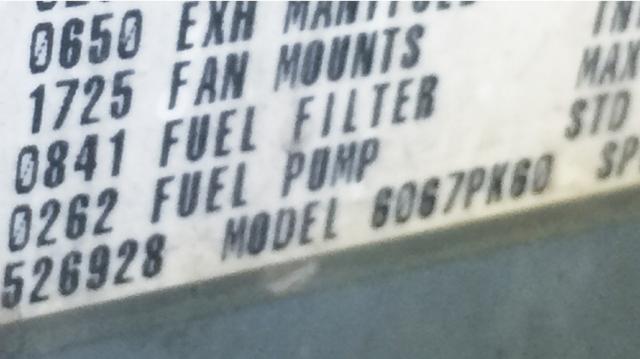Diesel Control

Frankenstein Series 60 Engine.
One could make an argument that the 12.7 Series 60 engine is the most sought after engine in our industry right now. This engine has a reputation for having the best fuel mileage in the industry and the 12.7 has been the preferred engine for most glider kits since 2008. As demand for the 12.7 goes up, supply goes down and techs are forced to salvage 12.7 parts from the dwindling supply of blocks, heads, camshafts, injectors, and of course ECMs.
It’s true that nearly all 12.7 parts are interchangeable but that doesn’t make them compatible. The Series 60 engine and its parts have evolved since 1988. Most techs know that a 12.7 can have DDEC II, DDEC III, and DDEC IV controls but most don’t realize that the 12.7 can also have 12 different camshafts. This is why you need to know your engine model/option. For practical purposes this boils down to knowing your build date and knowing what two letters are in your engine model number. If you look on your valve cover you should see a tag that has the model number listed. It will say something like, “Model 6067PK60”. All you really need to know is “PK”. In this example the P stands for premium and the K indicates a DDEC IV. Any used parts you get for your engine should be from an engine that has the same two letters yours does. Most techs call an engine with a mix of parts from different model numbers a “Frankenstein engine”. Not all combinations have obvious problems but some combinations do. When you first turn the key and look up at the stacks and wonder if that white smoke is going to clear. Sometimes it does and sometimes it doesn’t and you start hating yourself. I’d know. I’ve learned this lesson the hard way. Lately I’ve been getting calls from techs that have also recently learned this lesson. When you mix these parts you are essentially making a new engine. A new engine needs a new ECM program. Sometimes I can help. Sometimes I can’t. I recently got a call from a customer who rebuilt a 1992 GU DDEC II and used a DDEC III crankshaft tone ring with 36 points of timing reference instead of the old DDEC II tone ring with only 6 points of timing reference because he wanted to upgrade to a 1997 DDEC III control system. It’s a clever idea but that also put him in no man’s land as far as an ECM program. The engine would start but didn’t have enough power to get above 800 rpm out of gear. The DDEC II to DDEC IV conversion kit from Detroit doesn’t work for DDEC IIIs. Well. I made him a special program for his DDEC III to run his Frankenstein engine, a DDEC III program with DDEC III sensors and tone ring that runs with DDEC II pistons and a DDEC II camshaft.
Written by Fernando DeMoura, Diesel Control Service. Website: Dieselcontrolservice.com Phone: 412-327-9400
